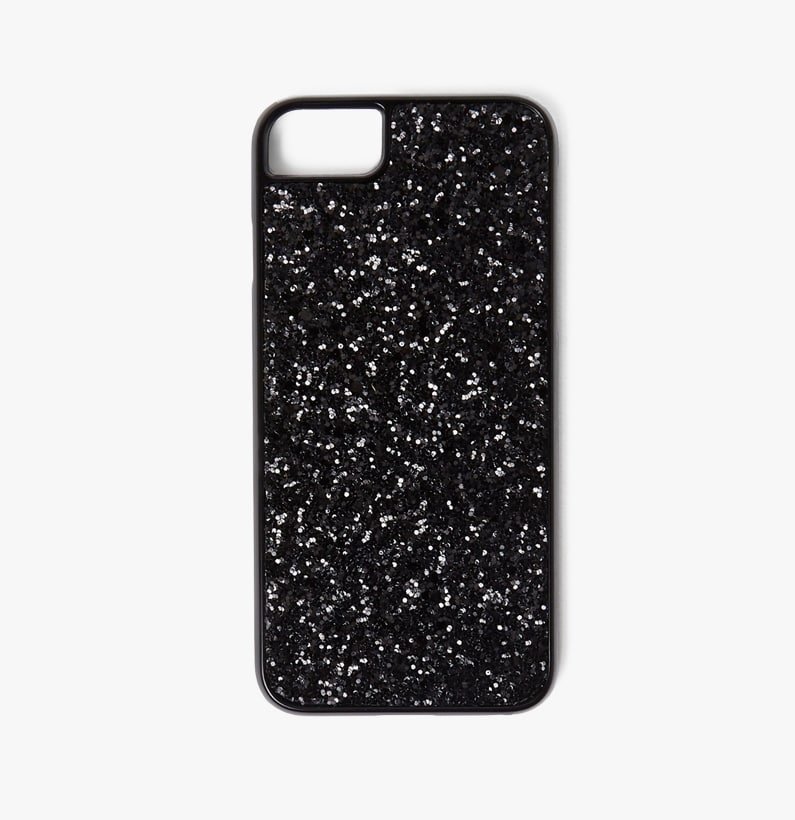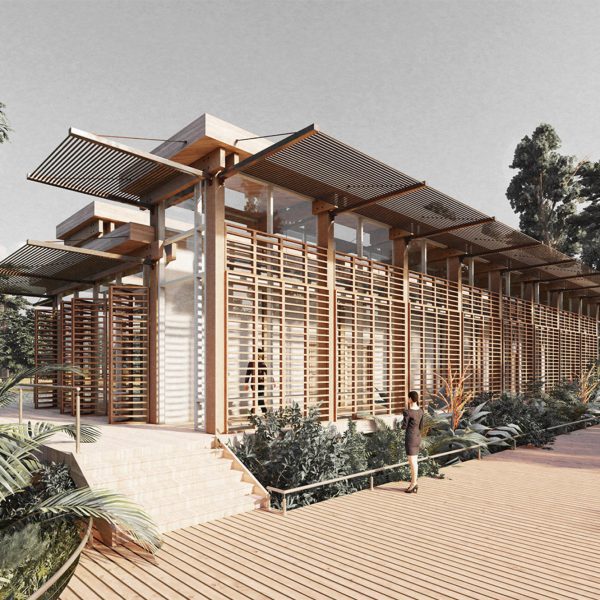Dezeen School Shows: a project aiming to expand habitats of animals and vegetation is included in this school show by Savannah College of Art and Design.
Also included is a community centre for mothers featuring workshops and exhibition spaces and a furniture collection exploring queer identity.
Institution: Savannah College of Art and Design (SCAD)
School: School of Building Arts
Courses: Masters of Architecture, BFA Furniture Design, BFA Interior Design, MFA Furniture Design and BFA Architecture
Tutor: Dean Geoffrey Taylor
School statement:
“The Savannah College of Art and Design (SCAD) is the preeminent source of knowledge in the arts.
“Whether designing the world’s next great buildings, interior spaces, furniture collections or adaptively reusing historic places, SCAD School of Building Arts students become professional architects, designers and preservationists.
“The university has been preparing talented students for professional careers in this multibillion-dollar market for 45 years.”
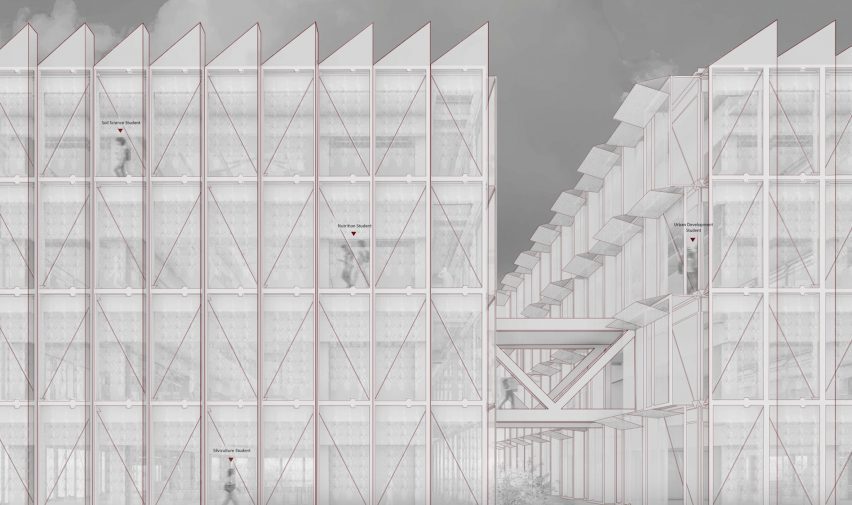
ELM: Urban Agriculture and Regenerative Land Use Practice Building by Eva Martin
“An urban agricultural oasis, the ELM building serves the students at AB Tech Community College, the local community and native ecology through a didactic use of steel construction: a conduit for scaling Indigenous agrarian intelligence to address modern social, economic and environmental challenges.
“The essence of this proposal exposes a global threat to a sustainable food supply as a result of degenerative agricultural practices in the US, as well as unequal access to nutrient-dense foods among marginalised communities.
“Located at the intersection of urbanity and the unique terroir of the Appalachian Region, the ELM Building offers a two-year vocational program in urban agriculture and regenerative land use practice, supplying the local community with equitable access to year-round nutrition and restoring the ecological resilience of the landscape.
“Through its use of steel construction, the ELM building exists as a living laboratory for resilience, efficiency and expression.”
Student: Eva Martin
Course: BFA Architecture
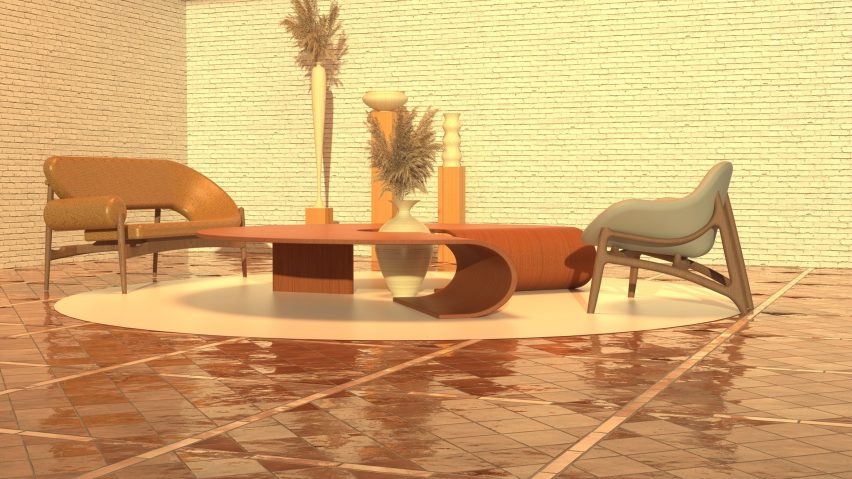
The Arcos Collection by Drew Hart
“Arcos is translated from the Spanish word for arches, which are a symbol of strength, support and often a threshold into a new space.
“In this context, you enter into a room designed to bring people together, emphasising the oral tradition of storytelling and conversation.
“Focused around the gathering room or lounge space, I aimed to create a collection of furniture that unifies people to recapture a sense of connectedness.
“The project is inspired by the values my family instilled in me – spending quality time through conversation, engagement and presence.”
Student: Drew Hart
Course: BFA Furniture Design
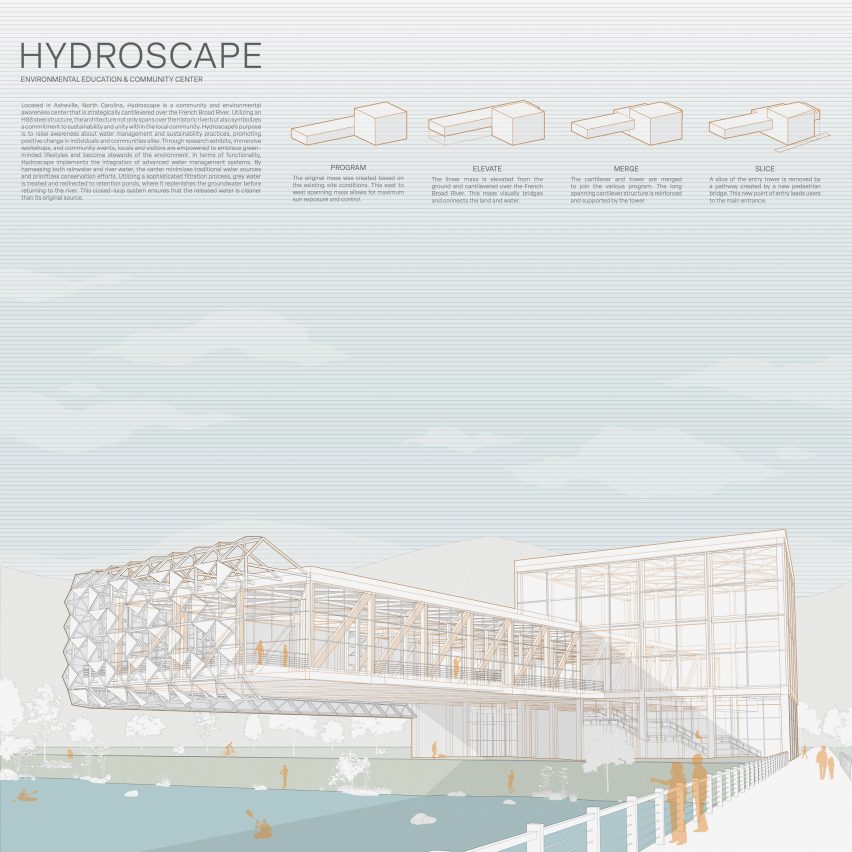
Hydroscape by Ben Cho
“Located in Asheville, North Carolina, Hydroscape is a community and environmental awareness centre that is strategically cantilevered over the French Broad River.
“Utilising an HSS steel structure, the architecture not only spans over the historic river but also symbolises a commitment to sustainability and unity with the local community.
“Hydroscape’s purpose is to raise awareness about water management and sustainability practices, promoting positive change in individuals and communities alike.
“Through research exhibits, immersive workshops and community events, locals and visitors are empowered to embrace green-minded lifestyles and become stewards of the environment.”
Student: Ben Cho
Course: BFA Architecture
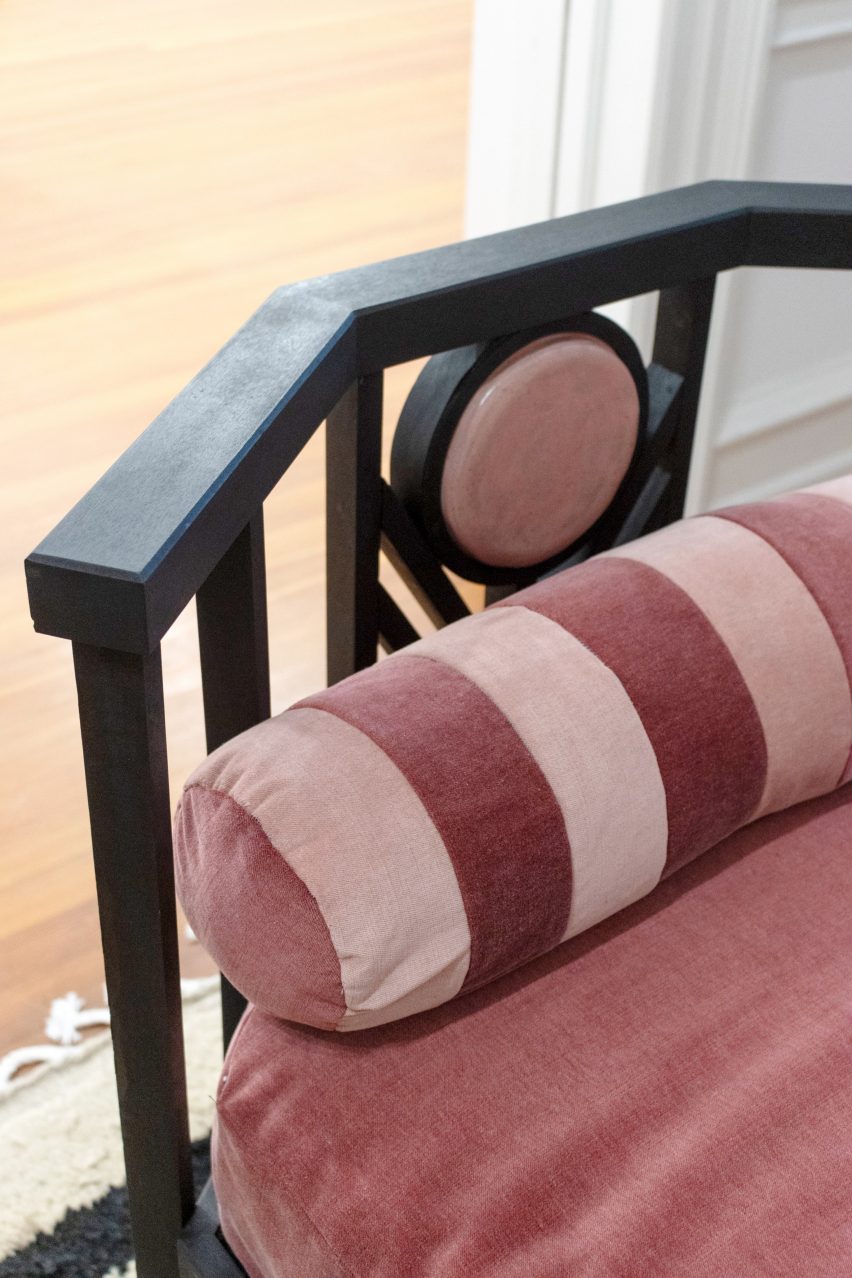
Aesthetic Seduction by Noah Adams
“Noah’s debut furniture collection represents an ideal cross-platform between queer and heteronormative households that can spark dialogue about identity, community, belonging and finding common ground.
“The thesis collection, Aesthetic Seduction, seeks to address this by furthering the Glasgow School and Viennese Secession’s goal of redefining the gendered and ethnic politics of objects and space by utilising their language and methodology to incorporate queer iconography into symbolic furniture as a means of expanding queer design and generational inclusion.”
Student: Noah Adams
Course: MFA in Furniture Design
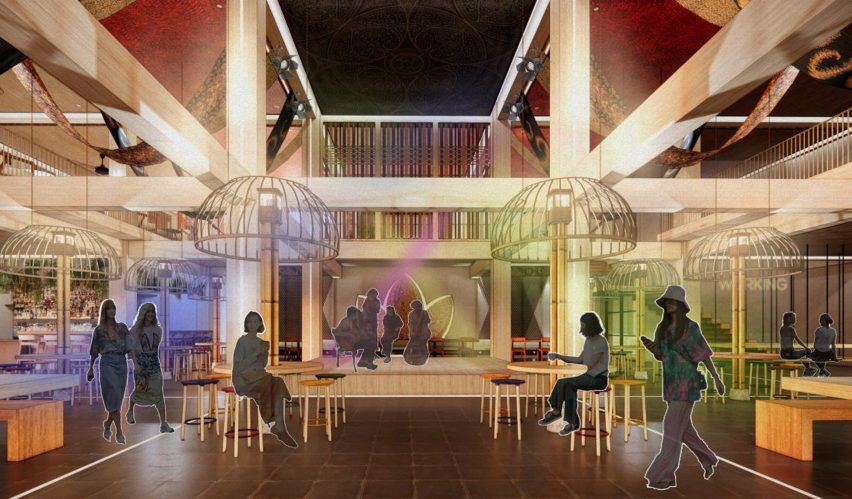
Singgah by Kyla Tangke Allo
“Navigating the impact of digital nomadism on Bali’s socio-economic landscape through a built environment.
“Since 2020, the number of digital nomads worldwide has surged to over 10.9 million, with at least 5000 digital nomads working from Bali, Indonesia.
“While this sector presents significant economic benefits to Bali, the prominence of nomadic culture could overshadow the local identity and traditions.
“Singgah encourages moments of introspection and connection where digital nomads and the local community coexistence can create a harmonious relationship that emphasises balance, unity and interconnectedness of all things.”
Student: Kyla Tangke Allo
Course: BFA Interior Design
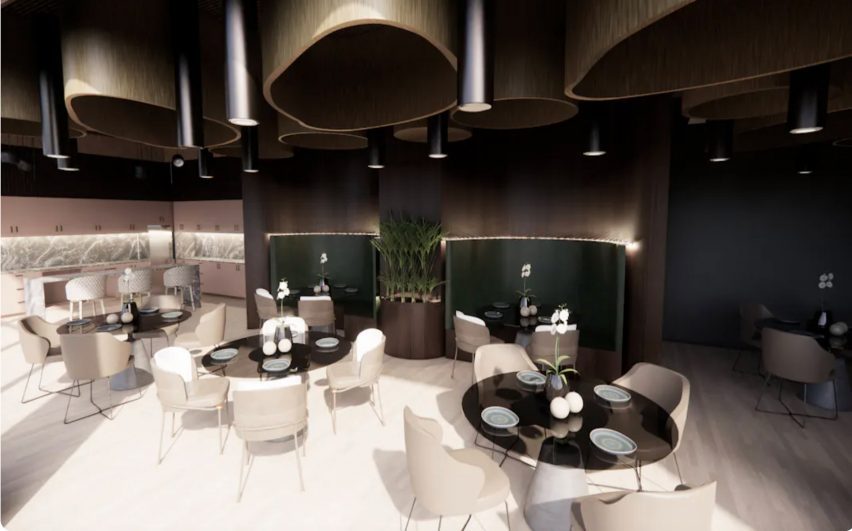
Canterbury by Lea Kabbani
“Canterbury Court is an assisted living facility that supports growing into independence.
“One of the three towers of the site is now undergoing renovations.
“The aim is to create a community where senior citizens may reside and socialise while enjoying a continuum of care that would adapt to their changing requirements.
“My journey as a graduate in interior design has equipped me with the expertise to visualise, create and implement designs across various contexts.
“With a strong foundation in both Arab and European design styles, I bring a unique perspective to every project.”
Student: Lea Kabbani
Course: BFA Interior Design

Casa Tuya by Maria Luz Carrillo
“In Quito, Ecuador, a stark educational divide exists, with only 13 per cent of the rural population enrolled in universities compared to 86 per cent in urban areas.
“In response to the housing shortage and cultural erosion in Quito, Casa Tuya aims to establish a student housing and workshop centre through active community participation – nurturing a sense of place identity, reviving Ecuadorian culture and facilitating access to education and resources for all.
“Axis Mundi is the core and centre of Casa Tuya, where cultures of the four Ecuadorian regions connect (Costa, Sierra, Amazonia and Galapagos).
“The different influences will meet at latitude 0°0’0”, sharing and learning about their culture – linear and wavy lines meet, creating an axis, and reaching its core.
“Through each region’s haptic skills, an experience of touch and connection will be created in the space, letting the users link with its culture and community.”
Student: Maria Luz Carrillo
Course: BFA Interior Design
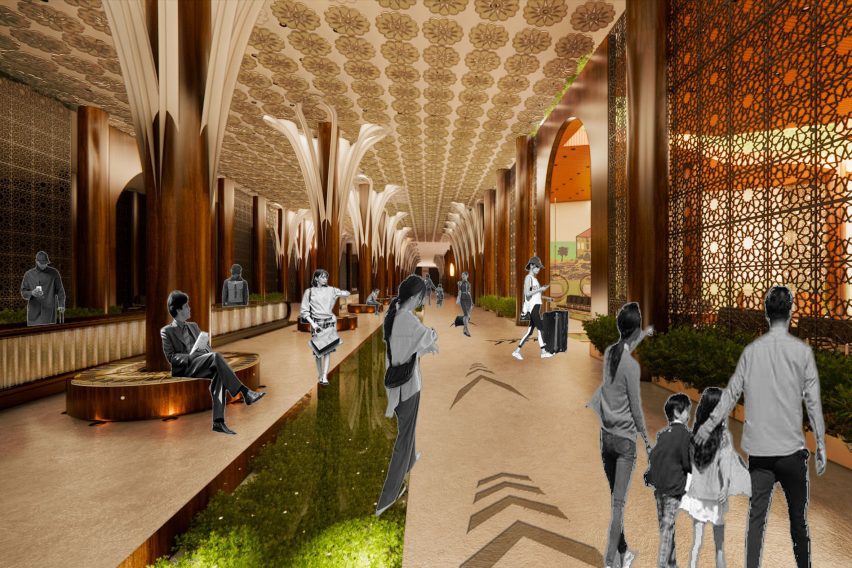
Beirut Rafic Hariri Airport by Sophie Kachouh
“As part of the Lebanese diaspora myself, I’ve experienced firsthand the emotional complexities associated with departures and returns at the Beirut Rafic Hariri Airport.
“Each goodbye carries a heavy emotional burden and every return brims with anticipation.
“Inspired by my own unsatisfying experiences and those of many others, I reimagined the airport experience to focus more on emotional resonance than mere occupancy efficiency.
“This project allowed me to delve into creating an environment that eases these emotional transitions and enhances connections to our homeland.
“By tailoring the user journey to reflect the emotions of each persona, from the layout to the ambience, I aimed to craft a space where memories are cherished and the bonds with Lebanon are strengthened, whether in moments of farewell or joyful reunion.”
Student: Sophie Kachouh
Course: BFA Interior Design
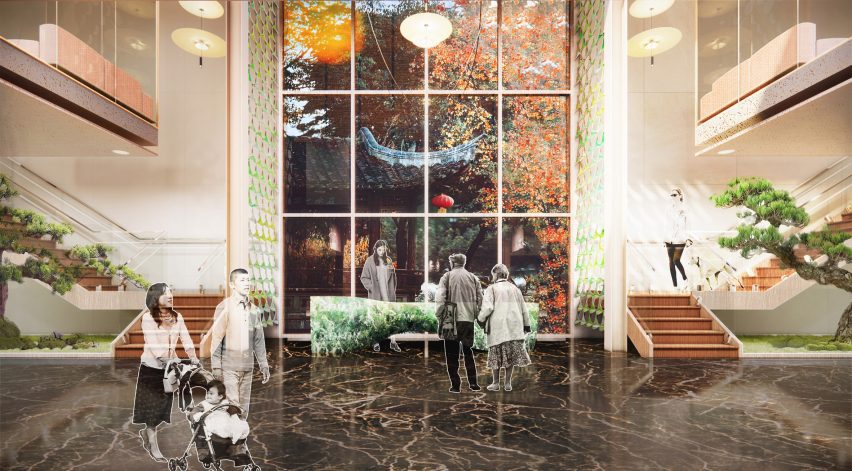
Unity Bridge: Community Life Centre by Xinyi Wang
“Located in Deyang City, the Unity Bridge Community Centre serves as a cultural nexus for its residents.
“This centre harmoniously integrates ancient Chinese family traditions with contemporary values, featuring multifunctional spaces for all ages, specialised zones for seniors, children and youth, as well as complete service facilities and offices.
“More than a mere structure, it stands as a living symbol of intergenerational unity and cultural continuity – the design of the community centre reimagines it as an architectural bridge, fusing cultural continuity into the urban fabric.
“A corridor seamlessly interlinks two once-disparate structures, functioning dually as a skywalk and an exhibit space.
“The space is crafted as a confluence of personal narratives and shared histories, elegantly bridging past and future.”
Student: Xinyi Wang
Course: MFA Interior Design
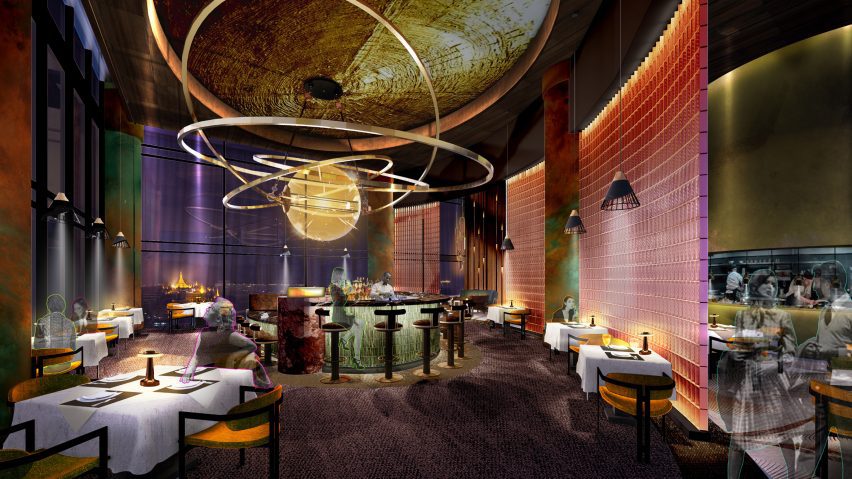
Pharos: A Global Hub for Third Culture Kids by Suwade Pe Than
“For my senior year, I dedicated my global upbringing as a Third Culture Kid (TCK) to my capstone project.
“By focusing on issues of belonging and self-identity that are rooted in the constant change in environments during a TCK’s adolescent years, I set out to find solutions for cultivating a culturally inclusive built environment.
“A Third Culture Kid is an individual that grew up in one or more cultures other than that of their parents or their passport country.
“Pharos empowers TCKs to rewrite their stories, fostering not just self-identity but a sense of profound belonging that resonates throughout their lives.”
Student: Suwade Pe Than
Course: BFA Interior Design
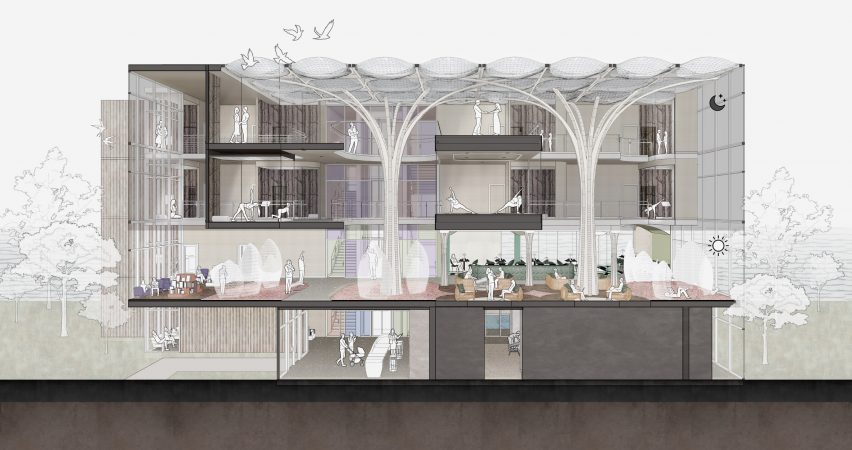
Designing the Future of Postpartum Centre by Peiwen Li
“This project combines ‘zuoyuezi’ practices – a postpartum month of rest for mothers – and mental health support for Generation Z mothers in China.
“It aims to empower new mums through a nurturing retreat with educational community workshops and inspiring exhibitions to reshape societal support for motherhood.
“This postpartum care community centre caters to Gen Z mothers and contains facilities for recovery, mental health and parenting, with therapy rooms and educational workshops tailored for comprehensive care.
“Secondary users like childcare experts and family members have access to specialised spaces for support and interaction.
“Operational areas support staff and guests, ensuring efficient service and a welcoming environment.”
Student: Peiwen Li
Course: MFA Interior Design
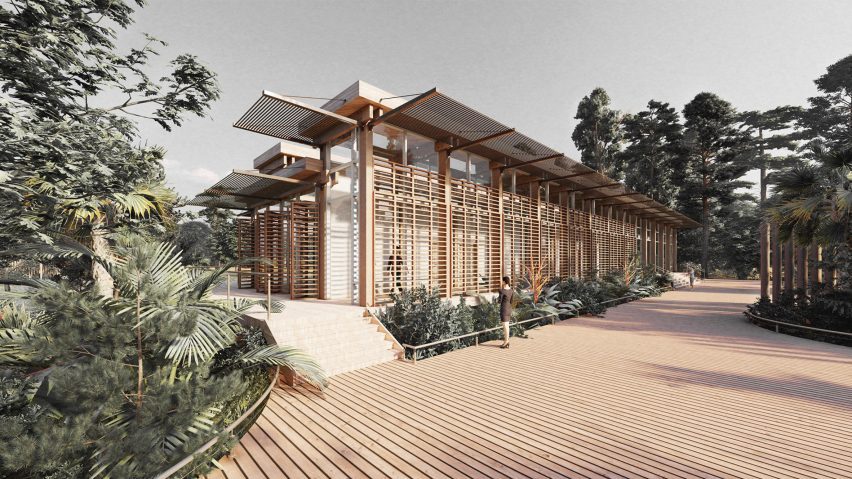
Relinquetur Research Centre by Gabriel Velasco
“The architecture will create voids in the noise by offering spaces that are framed by silence, resulting in multiple moments of reflection.
“The research centre studies the encounter of micro-ecosystems in the marsh environment, exploring how land, vegetation and animal life coexist in one habitat.
“The project’s location acts as a pulsating tissue, taking long deep breaths as the tides shift with time.
“The movement of water provides opportunities for vegetation and animals to expand their habitat, tidal creeks and mudflats become the stage for multiple interactions.”
Student: Gabriel Velasco
Course: Masters of Architecture
Partnership content
This school show is a partnership between Dezeen and Savannah College of Art and Design. Find out more about Dezeen partnership content here.



